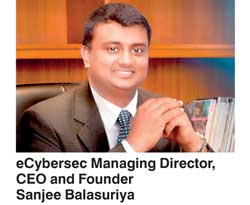Monday Dec 08, 2025
Monday Dec 08, 2025
Wednesday, 25 May 2016 00:00 - - {{hitsCtrl.values.hits}}
Electronic health records are prime targets because healthcare organisations lack the resources, processes and technologies to protect them. And it’s only going to get worse. Virtually all software, applications, systems and devices are now connected to the internet. This is a reality that cybercriminals recognise and are actively exploiting. Some 94% of medical institutions said their organisations have been victims of a cyber attack. For money hungry criminals, healthcare records are a treasure trove of easily accessible information.
Phishing is an attempt by cybercriminals to masquerade as a trustworthy entity in an electronic communication to gain sensitive consumer data. Phishing attacks typically come in the form of emails, social network messages or other forms of electronic communication.
Attacks that resulted from an insider, however, could be malicious or accidental, one in which an insider served as an inadvertent actor. An example of such an inadvertent incident would be an employee who clicks on a malicious link in phishing e-mail. Highly motivated criminals are realising and exploiting the political and financial value of healthcare data, putting patients’ medical and financial health in jeopardy. Unless healthcare organisations become as adept at protecting patient data as criminals are at attacking it, we could experience a tsunami of healthcare data breaches and medical identity theft the likes of which we’ve never seen. This is just the tip of the iceberg.
eCybersec Managing Director, CEO and Founder Sanjee Balasuriya said that, healthcare data is really valuable from a cyber criminal standpoint. Presently Sri Lankan hospitals are maintaining health records online.
“We as information security consulting company in Sri Lanka involved proactively with major hospital chains to provide necessary security consulting to mitigate such cyber attacks. Mainly we advised on Advanced Persistence Threats and Zero Day Malware protection, and how hospital patient data can be protected from cyber criminals. Malware is the most frequently reported line of attack during the past 12 to 14 months, according to 65% of survey respondents. Botnets and internal attack vectors (such as employees compromising security) were cited by 26% of respondents.
So we encourage our health sector clients to networks need to increase the sophistication of their security analytics software so they can identify attacks as they’re happening and head them off by learning their patterns. eCybersec one of the leading Information Security Consultancy company in Sri Lanka and provides many IT Security managed services to top corporate customers.